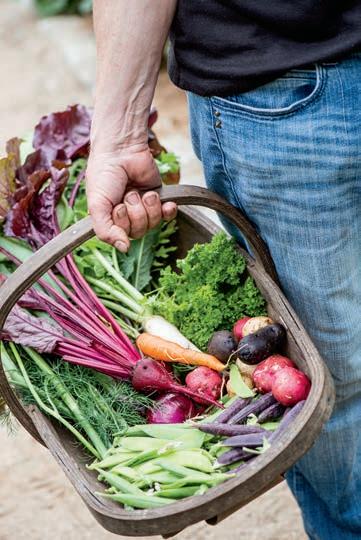
1 minute read
NOT-SO-LITTLE
ithout precise directions, you’d never find Bill and Eileen Elliott’s house. But with some guidance, you’d find yourself standing before a rustic handhewn archway gate, and through that, a curving, colorful path lined with astilbe, geraniums, daylilies, phlox, roses, and all manner of other garden gems. If you haven’t been diverted by the herb garden or one of the other “rooms” along the route, the path eventually arrives at a raised-bed vegetable garden, where festive poppies skirt succulent tomatoes, corn, greens, squash, and all the fixings to feed a family. Duck beneath the kiwi-smothered arbors, sidestep the billowing daylilies, and sample a string bean, because the vegetable garden is the epicenter of what these self-sufficient homesteaders are all about. Yes, it supplies fuel for their survival. But why not smell the flowers along the way?
If this sounds like Eden, it is one, of sorts: a small paradise created by one couple who dreamed of self-sufficiency and longed to escape the renters’ rut. But back in the late ’70s, when our story begins, Bill was a math teacher. Eileen also had a teaching degree and was moonlighting as a librarian, but mostly was serving as mother to their two boys, so the state of their savings account was meager when they first heard of a parcel in Hancock, New Hampshire, that nobody else wanted. Actually, the lawyer who owned the land was quite
by Tovah Martin
attached to his 22-or-so acres when the Elliotts made their initial inquiry in 1978, but he acknowledged that yes, the land could be reached only by a seasonal road, sitting on a rocky ledge that defied any type of motor-vehicle access, and that perhaps he wasn’t sitting on a gold mine. The site had no power lines (in fact, the nearest line was a mile and a half away) and no house (although an 1800s foundation remained)—and to call it “densely wooded” was putting it mildly. “You couldn’t put your hands out and twirl anywhere on this land,” Eileen recalls. Nevertheless, the Elliotts figured that it was their only chance at the American Dream.








OPPOSITE , TOP ROW, FROM LEFT : A bounty of just-picked root vegetables, beans, greens, and more, fresh from the garden; preserves are stored in the root cellar; delicate poppies seed themselves in among the veggies.
MIDDLE ROW : Newly sprouted green beans; a hearty-looking cabbage, ready for harvest; Bill tends to the weeding.
BOTTOM ROW : The Elliotts were inspired by Scott and Helen Nearing’s experience in Maine; a burgundy ‘Blauwschokkers’ peapod; water for the garden is available from a 300-gallon storage tank.
THIS PAGE , ABOVE : The Elliotts built their post-andbeam Cape using wood harvested from their property.











